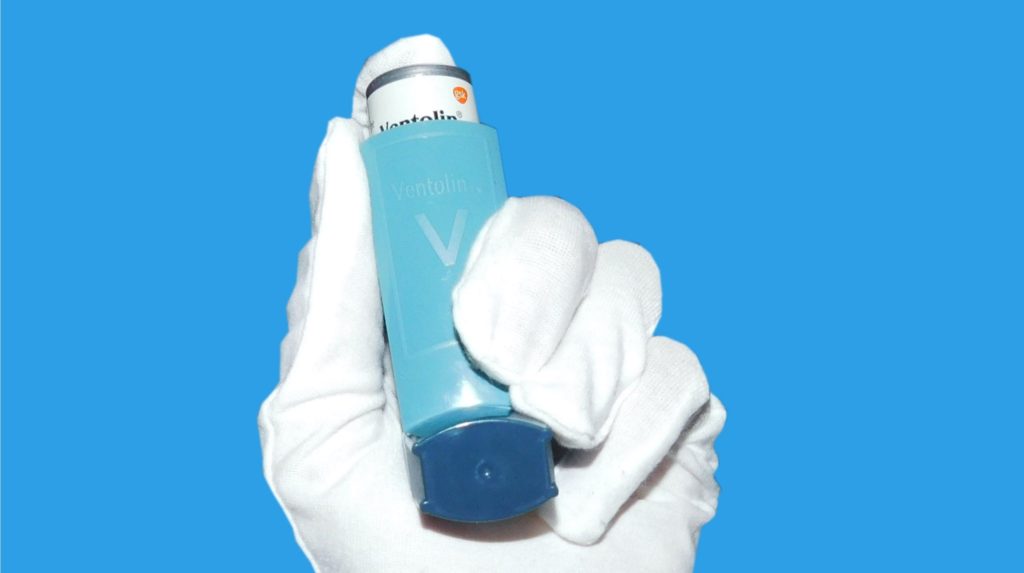
What is asthma? It is a lung disease where the airflow through the throat becomes restricted. It can be fatal if left untreated. To look at this question we need to look at how the lungs work and we need to look at how our body’s immune systems deal with attacks.
We have two lungs and they are attached to the trachea, our windpipe, at the bottom by two bronchial tubes. The windpipe and the bronchial tubes are made of cartilage and muscle which helps support them and make sure they don’t collapse. You wouldn’t have a very good day if your trachea was not supported and could just collapse at any time. The bronchial tubes divide up into smaller branches and connect to the lungs. The lungs are made up of lobes. The right lung has three lobes and the left lung has two lobes. This is to make room for the heart, which sits on the left side. The bronchial branches break up into even smaller tubes called bronchioles. These are very small and they are just made of muscle. They don’t have any cartilage. The alveoli are at the end of the bronchioles. Blood vessels run through the alveoli.
When you breathe in, your diaphragm pulls down creating a vacuum in the space under your lungs. This vacuum increases the pressure in the lungs and air is sucked in. The air goes through your nose or mouth, down your trachea, and along one of the bronchial tubes. It goes along the branches, getting divided more and more as it goes. It goes along the bronchioles and into the alveoli, which are the air sacks. Blood vessels are very close to the surface of the alveoli. Oxygen passes out of the air into the blood vessels and is carried away. Carbon dioxide passes out of the blood vessels into the air inside the alveoli. When the process has finished, the diaphragm relaxes, equalizing the pressure, and the air is breathed out taking your carbon dioxide with it.
There are many small hairs along the inside of the bronchial tubes and bronchioles called cilia. When you breathe in, your nose can catch some dust and particles, but a lot will get down to your lungs. The job of the cilia is to catch these particles. The bronchioles also secrete a mucus which the particles will stick to. This mucus with its particles moves up the bronchioles until it can reach the trachea, where it is coughed out, or swallowed.
So, how do our immune systems react to an infection or an invasion of bacteria or organisms? When something is detected, the immune system goes into action. If it thinks there is an invading microorganism, damaged cells release chemicals that make the blood vessels leak fluid into the tissue, making it swell. This serves to trap whatever is invading the body and to summon the white blood cells that will eat the invaders. Once the problem is solved, the inflation will disappear.
Asthma happens when this system goes awry. Asthma is a disease of the lungs. When an asthma attack occurs, the body believes that something has invaded. Sometimes it can be particles, or sometimes it can be nothing. This triggers the immune system, which releases the chemicals that make water leak out of the blood into the bronchioles and the muscles there start to swell up and stiffen. The bronchial tubes have cartilage, so they cannot swell, but the bronchioles are only made of muscle, so they can. When they swell, it makes them narrower and reduces the amount of air going in and out. This swelling can make the chest feel tight and hurt. It also means people have to struggle to breathe. At the same time, the amount of mucus produced by the lungs increases. The body wants to capture and remove all the microorganisms it believes are attacking it and mucus is a good way of doing that. The problem is, excess mucus coupled with the narrowed airways, leads to a lot of trouble breathing. If the problem gets worse, it can lead to death. In the US alone, over 3,500 people a year die from asthma.
There is no cure for asthma, but it can be managed. When an attack is happening, the sufferer can use an inhaler. The inhaler has a button the sufferer can push and it releases a metered dose of medicine. The medicine is a muscle relaxant and when the person breathes it in, it relaxes the muscles in the bronchioles. Once they are relaxed, the person can breathe more easily and clear all of the mucus. And this is what I learned today.
Photo by Luci: https://www.pexels.com/photo/a-hand-wearing-white-gloves-holding-an-inhaler-6816451/
Sources
https://www.who.int/news-room/fact-sheets/detail/asthma
https://www.lung.org/lung-health-diseases/how-lungs-work
https://www.hse.gov.uk/asthma/lungs.htm
https://en.wikipedia.org/wiki/Pathophysiology_of_asthma
https://www.healthline.com/health/asthma
https://www.nhsinform.scot/illnesses-and-conditions/lungs-and-airways/asthma/
https://medlineplus.gov/ency/article/000821.htm
https://www.webmd.com/asthma/video/e-asthma-important-treat

